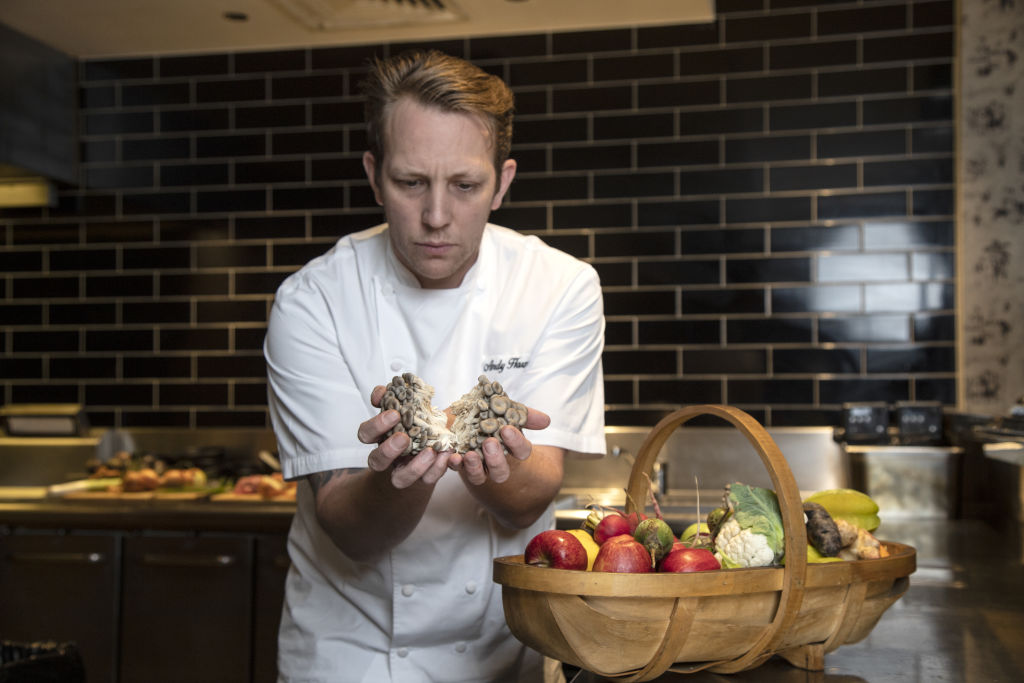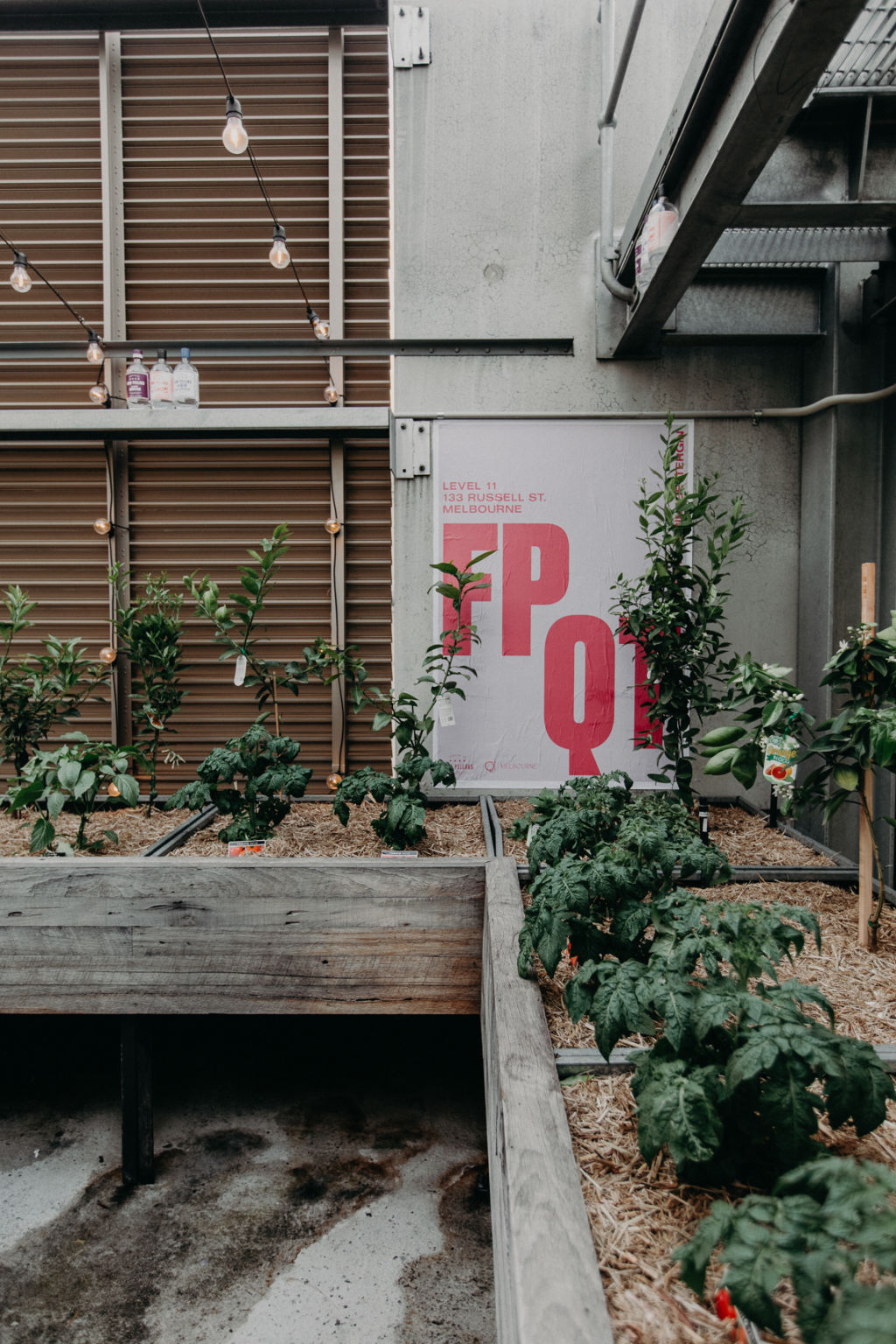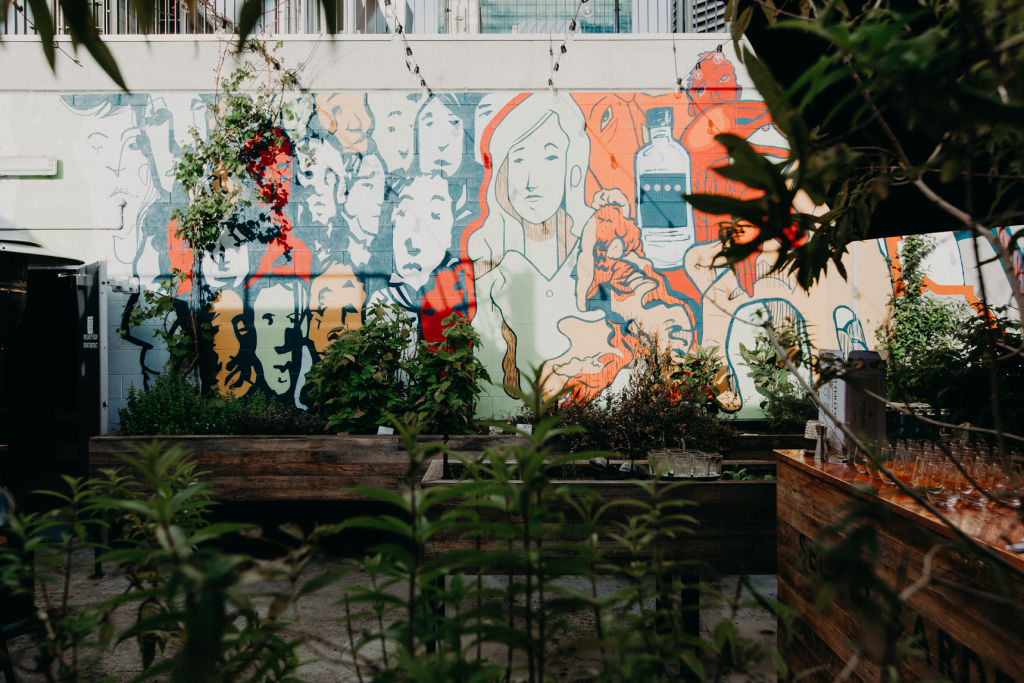QT hotel hotel chef Andy Harmer on how to set up a kitchen garden at home

Growing up in the English countryside, my passion for food commenced from a young age. I would watch my parents with fascination as they attended to their kitchen garden and created family meals using only the freshest seasonal local produce with minimal intervention.
A passion project of mine over the past year has been redesigning and cultivating the rooftop garden at QT Melbourne into an intimate, green space.
The garden is perched above the city hustle and nestled behind the crowd-favourite, the Rooftop at QT, now known as the Secret Garden. Not only is the garden a self-sufficient produce source, but also can be transformed into a hidden gem for those looking to host a unique event.
Every day, the team and I pick a selection of vegetables, herbs, flowers and fruit from the garden, using freshly picked produce in dishes on the Pascale Bar and Grill menu, as garnishes in an assortment of handcrafted cocktails on the Rooftop, and woven into our dessert selection.

Adding pops of flavour to your food is all about using fresh herbs. And there’s no better way to add fresh flavour to dishes (and also save yourself a bit of money) than with your own herb and vegetable garden.
It’s not as hard, or as time-consuming, as it sounds. All you need is a plan.
Whether you have bags of space to grow a garden or just some pots on the balcony, planning is key to cultivating plants for use in cooking, or to enjoy their fragrance or blooms.
Start by drawing out your options and working with the space you have. Think about positioning; plant near your entertaining and outdoor areas where their aromas and colours can be enjoyed, and you can be inspired. Hot tip: the right plants can also be used to provide a bit of privacy in the city, for the more intimate moments you may require …
Pots and containers are also key. If you don’t have the space, lots of herbs and vegetables grow well in containers. Single-use poly-boxes lined with a bin-bag and some small drainage holes are a great cost-effective DIY option.
If space is sparse, growing herbs vertically in wall containers and planters is also a good option. Another upside of growing herbs in pots is that you can move them to suit the season, and bring them indoors during winter.

Growing conditions for your garden means that pottery soil will be your new best friend. It holds water, unlike garden soil. You can get some from your local Bunnings and, trust me, it’s worth the trip.
If this is the first time you’ve tried growing, start simple. Perennial herbs like thyme, oregano and rosemary are good herbs to start with. You need to be smart about what you grow, and pick things that will grow back efficiently.
Herbs have also found their way into the cocktail scene, and open a door to a huge number of flavour aroma possibilities that otherwise wouldn’t be possible. To up your ‘gartending’ game, consider adding lemon verbena (great for a Southside) or adding to your mint collection with chocolate mint, river mint and apple mint. Honeysuckle is also a good one, as it’s very aromatic – you can also work it into desserts, or serve with fish. For the true Keith Floyd’s out there, you could always grow your own grape vine!
Having all the gear (and no idea) is also a crucial part of your herb garden. This is where you can get your hoe out. No, seriously, a hoe is super important to rejuvenate and reactivate the soil. Other essentials include gloves, secateurs and pruning shears.
Last, but not least, don’t forget to eat what you grow. It’s easy to get obsessed with watching your plants grow bigger and better, so don’t forget the reason you’re actually growing them in the first place, to eat them!
Try making a summery, herb-heavy tomato salad, a big jug of Pimms or fill the cavity of the bird you’re about to roast.
Andy Harmer is the executive chef of QT Melbourne hotel
Sign up for the best of Domain Review in your inbox each week
We recommend
We thought you might like
States
Capital Cities
Capital Cities - Rentals
Popular Areas
Allhomes
More







